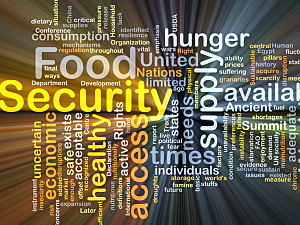Food insecurity—limited access to adequate nutritious food—is well-established to be associated with hypertension, diabetes, and obesity. Another dimension of food inadequacy, proximity to unfavorable food stores such as fast-food restaurants, has been associated with obesity, elevated blood pressure, and stroke.
Rani Zierath of the Division of Cardiovascular Medicine at Brigham and Women’s Hospital, Amil M. Shah, MD, MPH, co-director of the Cardiovascular Imaging Core Laboratory in the Division, and colleagues have published the novel finding that economic food insecurity is a risk factor for new-onset coronary heart disease (CHD) and new-onset heart failure with reduced ejection fraction (HFrEF). In JAMA Network Open, they say these associations persisted even after accounting for traditional cardiovascular risk factors and socioeconomic status, suggesting the effects of food insecurity extend beyond economic disadvantage.
Methods
The researchers analyzed data from the Jackson Heart Study (JHS), an ongoing prospective epidemiologic study in which 5,306 Black adults in the Jackson, Mississippi, metropolitan area were recruited for a first study visit between 2000 and 2004.
The analysis included 3,024 participants (66% female, mean age 54) who were free of CHD and HF at study visit 1, answered questions about food insecurity at that visit, and had geocoded data available about their place of residence.
Key covariates in the analysis were:
- Economic food insecurity—Participants were considered economically food insecure if they said they had received food stamps in the past year or reported stress about “not enough money for basics such as food”
- Diet quality—A Healthy Eating Index (HEI-2015) score and the Life’s Simple 7 diet score were calculated for each participant based on responses to a 158-item food frequency questionnaire at visit 1
- Physical activity was assessed with a JHS-designed physical activity survey and categorized according to the Life’s Simple 7 criteria
- Stress was assessed with a JHS-designed scale that inquires about jobs, relationships, neighborhood, caregiving, legal and medical issues, racism/discrimination, and ability to meet basic needs
Data analysis was conducted from September 1, 2020, to November 30, 2021.
Economic Food Insecurity
Economic food insecurity was associated with an increased risk of incident CHD, HF, and HFrEF after adjustment for age and sex.
After further adjustment for hypertension, diabetes, body mass index, income, educational level, physical activity, smoking, diet, and stress:
- Incident CHD—HR, 1.98 (P<0.05)
- Incident HF—HR, 1.59 (not statistically significant)
- Incident HFrEF—HR, 2.43 (P<0.05)
- Incident stroke—HR, 0.89 (not statistically significant)
Unfavorable Food Stores
Unfavorable food stores were defined as convenience stores, bakeries, shops that sell nuts/candy/ice cream, and fast-food establishments. Overall diet quality was similar for participants who lived within 1 mile of more than 2.5 unfavorable food stores and those with fewer unfavorable stores nearby.
In multivariable analysis, living within 1 mile of >2.5 unfavorable food stores was not associated with any CV outcome.
How Clinicians Can Help
These results suggest targeting food insecurity could reduce incident CHD and HF, and help mitigate the marked racial disparity in the burden of cardiovascular disease in the United States.
Federal and local policy changes are needed to address food insecurity, such as expanding the Supplemental Nutrition Assistance Program, implementing community food resource programs, and improving employment opportunities. These interventions are outside the purview of most CV clinicians, but we can diagnose and document food insecurity to motivate policy changes.
